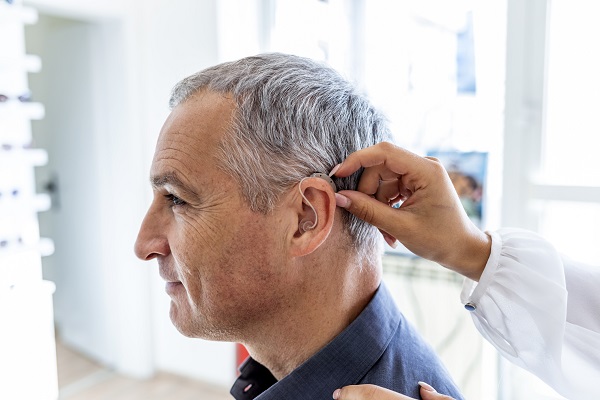
The invisible disability of hearing loss can be frustrating for older adults, and may even lead to social isolation and depression. It is among the top three health concerns for older adults and affects more than 30 Million Americans. Older adults may choose to use hearing aids to treat hearing loss. Thankfully, since the Food and Drug Administration’s over the counter (OTC) hearing aids ruling, a wider array of more economical options are available without a medical exam or prescription.
With more options than ever before, it may be hard to know where to start looking. Depending on your needs and the specific product you choose, here are some aspects to consider:
- Product selection: OTC hearing aids are available in a variety of styles, from in-ear to behind-the-ear models, and they vary in terms of features and price. It is good to consider budget, your hearing needs, and preferences when selecting a product.
- Degree and type of hearing loss: Typically, the OTC hearing aids are designed for those with mild to moderate hearing loss.
- Fitting: OTC hearing aids are designed to be self-fitting, and this can be a challenge for some users, especially those who are not familiar with hearing aid technology. Most manufacturers provide instructions and support to help with the fitting process.
- Sound quality: The sound quality can vary, depending on the product. Some devices use basic amplification technology, while others have more advanced features such as noise reduction and feedback cancellation. You may need to experiment with different devices to find one that provides the best sound quality for your needs.
- Adjustments: OTC hearing aids typically have limited options for adjustments compared to prescription hearing aids. However, some products offer customizable settings that can be adjusted using a smartphone app or other device. You may need to spend time experimenting with these settings to find the best configurations..
- Comfort and fit: The devices should fit comfortably in the ear and not cause any discomfort or irritation. You may need to experiment with different ear tip sizes or styles to find the most comfortable fit.
- Price: The cost of OTC hearing aids can vary significantly, depending on the style, features, and brand.
- Trial period: Most manufacturers offer a 45-100 day risk-free trial period, making it easy to choose a pair that is right for you.
Taking the time to select the right product and properly adjust the device is key. However, some users may find the self-fitting process challenging and may prefer to work with an audiologist to find a prescription hearing aid customized to their needs.
It is a good practice to get your hearing tested regularly. There are many benefits to addressing hearing loss including improved balance and a decreased risk of cognitive decline and dementia. It is also important to stay socially active and engaged. Consider joining clubs, volunteering, or participating in other activities that interest you to help you stay connected with others and maintain a positive outlook on life.


